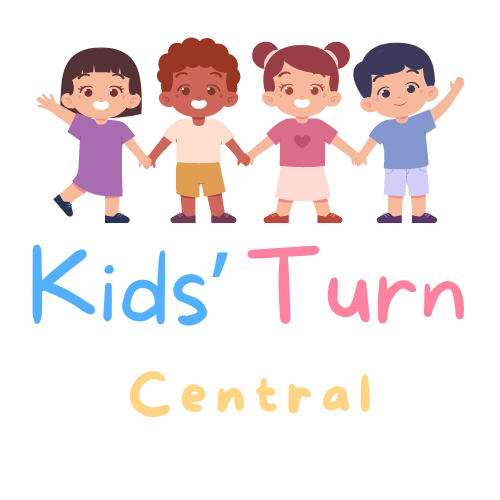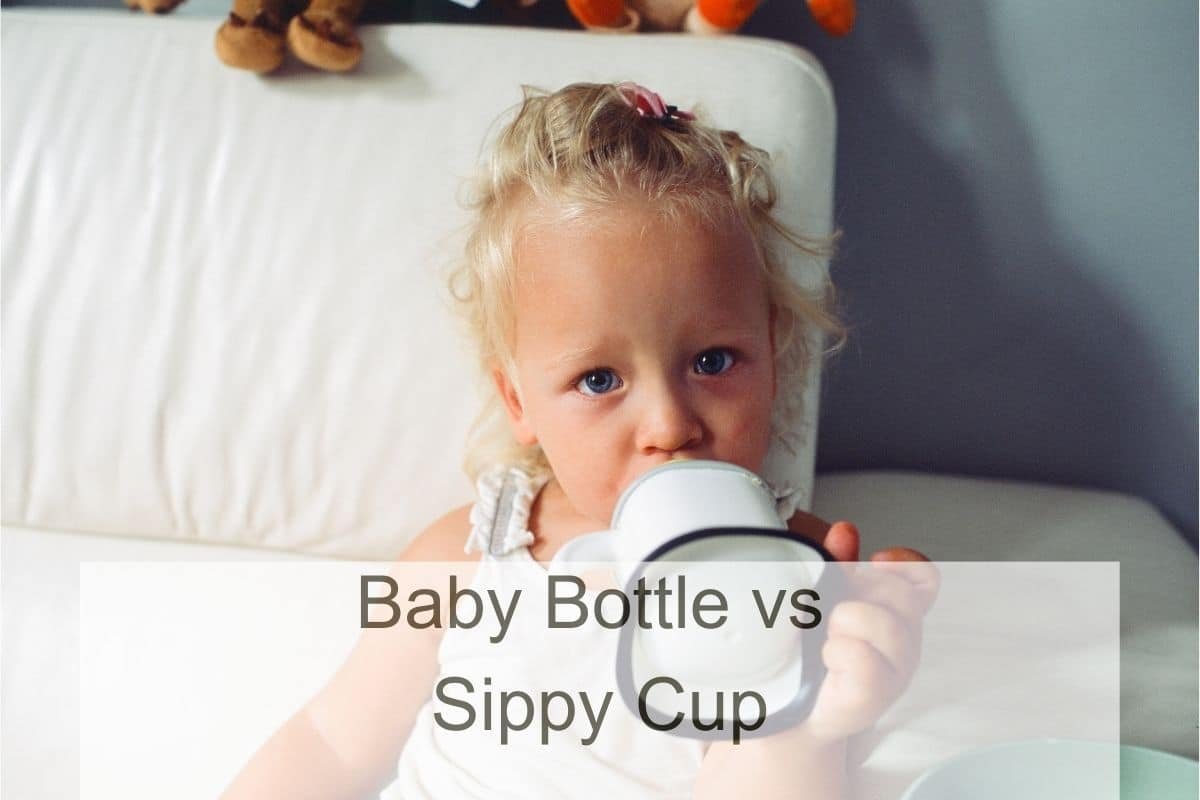As a new parent, choosing between a baby bottle and a sippy cup can be a daunting task. Both options have their pros and cons, and it can be challenging to decide which one is best for your child. While the baby bottle is the traditional choice, the sippy cup has become increasingly popular in recent years.

When it comes to feeding infants, the bottle is the only way to go, except for breastfeeding. However, as your child grows older, they may start to show an interest in feeding themselves. This is where the sippy cup comes in handy. Sippy cups are designed to help older babies learn to drink and feed independently, making the transition from bottle to cup a little easier.
While some babies can switch from the bottle to an open cup with ease, others may need the help of a transitional sippy cup. In this article, we will explore the differences between baby bottles and sippy cups, the benefits and drawbacks of each, and when to make the switch. By the end of this article, you will have a better understanding of which option is best for your child’s needs.
Understanding Baby Bottles

As a new parent, choosing the right baby bottle can be overwhelming. There are many types of baby bottles, and it can be difficult to know which one is best for your baby. In this section, I will explain the different types of baby bottles, when to use them, and how to choose the right one for your baby.
Types of Baby Bottles
There are three main types of baby bottles: plastic, glass, and silicone. Plastic bottles are lightweight and unbreakable, but they can become discolored and scratch easily. Glass bottles are durable and easy to clean, but they are heavy and can break if dropped. Silicone bottles are lightweight, unbreakable, and easy to clean, but they are expensive.
In addition to the material, there are also different types of nipples to choose from. Standard nipples are round and come in different flow rates. Wide-neck nipples are wider and can be easier for some babies to latch onto. Anti-colic nipples have a vent system that helps reduce the amount of air your baby ingests while feeding.
When to Use Baby Bottles
Baby bottles are typically used when breastfeeding is not an option or when supplementing breast milk with formula. It’s important to note that breast milk is the best source of nutrition for babies, and the American Academy of Pediatrics recommends exclusive breastfeeding for the first six months of life.
How to Choose the Right Baby Bottle
When choosing a baby bottle, it’s important to consider your baby’s age, feeding needs, and personal preferences. Newborns typically use smaller bottles with slower flow nipples, while older babies may need larger bottles with faster flow nipples.
It’s also important to choose a bottle that is easy to clean and assemble. Some bottles have more parts than others, which can make cleaning and assembly more difficult.
Exploring Sippy Cups

Benefits of Sippy Cups
I have found that sippy cups can be beneficial for toddlers as they help in transitioning from bottles to regular cups. These cups are designed to prevent spills, making them ideal for little ones who are learning to drink independently. Additionally, sippy cups can aid in developing motor skills and hand-eye coordination as children learn to hold and sip from them.
When to Introduce Sippy Cups
I’ve learned that it’s generally recommended to introduce sippy cups to babies when they are around 6 to 9 months old, or when they can sit up and hold objects on their own. It’s important to start the transition from bottles to sippy cups gradually, allowing babies to get accustomed to the new drinking method. This can help in preventing potential issues related to prolonged bottle use and aid in the overall development of the child.
Comparing Baby Bottles and Sippy Cups

As a parent, I understand the importance of choosing the right feeding method for my child. When it comes to transitioning from a baby bottle to a sippy cup, there are some key differences to consider.
Differences in Design
Baby bottles and sippy cups have different designs that affect how they are used. Baby bottles typically have a nipple that allows babies to suckle and control the flow of milk. Sippy cups, on the other hand, have a spout that requires the child to suck and bite to get the liquid out.
Another design difference is the presence of air bubbles. Baby bottles can create a vacuum that can lead to air bubbles, which can cause colic and other digestive issues. Sippy cups, on the other hand, are designed to prevent air bubbles, making them a better option for babies with sensitive stomachs.
Impact on Oral Development
The type of feeding method you choose can also impact your child’s oral development. Using a baby bottle for too long can lead to dental problems, such as tooth decay and crooked teeth. Sippy cups, on the other hand, promote proper oral development by encouraging children to use their lips and tongue to control the flow of liquid.
Ease of Cleaning
Cleaning baby bottles and sippy cups can be a hassle, but sippy cups are generally easier to clean. Baby bottles have multiple parts, including the nipple, bottle, and ring, that need to be cleaned and sterilized. Sippy cups, on the other hand, have fewer parts and are often dishwasher safe.
Transitioning from Bottle to Cup

As a new parent, transitioning your baby from a bottle to a sippy cup can seem daunting. However, it’s an essential step in your child’s development that can help prevent tooth decay and promote healthy eating habits. Here are some tips that worked for me when transitioning my child from a bottle to a sippy cup.
Signs of Readiness
Before you make the switch, it’s important to look for signs of readiness. According to Dr. Brown’s Baby, these signs include:
- Your baby can sit up on their own and hold their head up steadily.
- Your baby is able to hold and drink from a cup with assistance.
- Your baby is showing interest in self-feeding and can grasp and hold objects.
If your baby is not showing these signs yet, it may be best to wait a little longer before transitioning to a sippy cup.
Tips for a Smooth Transition
Here are some tips that can make the transition from bottle to sippy cup smoother:
- Introduce the sippy cup gradually: Start by offering the sippy cup during mealtime and offering the bottle at other times. Slowly reduce the number of bottle feedings over time.
- Choose the right sippy cup: Look for a sippy cup with handles that is easy for your baby to grip. Also, choose a cup with a soft spout that is gentle on your baby’s gums.
- Offer water in the sippy cup: Start by offering water in the sippy cup instead of milk. This will help your baby get used to the cup and reduce the risk of tooth decay.
- Be patient: Remember that every baby is different, and some may take longer to make the transition than others. Be patient and offer lots of praise and encouragement along the way.
Health and Safety Considerations
As a parent, I understand that the health and safety of my baby is of utmost importance. When it comes to choosing between a baby bottle and a sippy cup, it is important to consider the materials used in the containers and the proper sterilization techniques.
BPA in Containers
Bisphenol A (BPA) is a chemical found in many plastic products, including some baby bottles and sippy cups. BPA has been linked to a variety of health problems, including developmental issues and cancer. As such, it is important to choose containers that are BPA-free. Look for containers that are labeled as such, or consider using glass or stainless steel containers instead.
Proper Sterilization Techniques
Proper sterilization of baby bottles and sippy cups is crucial to prevent the spread of harmful bacteria. There are several methods for sterilizing containers, including boiling, using a sterilizer, or using a dishwasher. Be sure to follow the manufacturer’s instructions for proper sterilization, and replace containers that are cracked or damaged.
Popular Brands and Products
Top Baby Bottle Brands
As a new parent, you may be overwhelmed by the number of baby bottle brands available in the market. Some of the top baby bottle brands include Philips Avent, Dr. Brown’s, Tommee Tippee, Comotomo, and MAM. These brands offer a range of bottles with different features such as anti-colic vents, wide-necked bottles, and bottles made from different materials like glass or plastic.
Philips Avent is a popular brand that offers a range of baby bottles with different features. Their Natural bottles have a wide, breast-shaped nipple that mimics the feel of the breast, making it easier for babies to switch between breast and bottle feeding. Dr. Brown’s bottles are designed to reduce colic, gas, and spit-up, thanks to their patented internal vent system. Tommee Tippee bottles have a unique, breast-like shape and a heat-sensing straw that changes color when the milk is too hot. Comotomo bottles are made from soft, silicone material that mimics the feel of skin, making it easier for babies to latch on. MAM bottles have a unique self-sterilizing feature that makes them convenient for travel.
Recommended Sippy Cup Brands
When it comes to sippy cups, there are many brands to choose from. Some of the recommended sippy cup brands include Munchkin, NUK, Playtex, and Tommee Tippee. These brands offer a range of sippy cups with different features such as spill-proof valves, easy-grip handles, and different types of spouts.
Munchkin is a popular brand that offers a range of sippy cups with different features. Their Miracle 360 cups have a spill-proof design that allows babies to drink from any side of the cup. NUK sippy cups have a soft, silicone spout that is gentle on baby’s gums and teeth. Playtex sippy cups have a unique Twist ‘n Click feature that makes it easy to open and close the cup. Tommee Tippee sippy cups have a removable, two-piece valve that makes them easy to clean.

